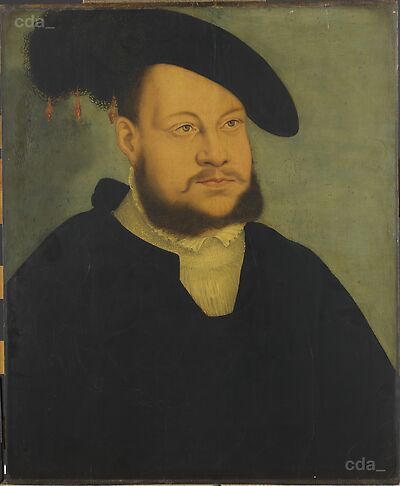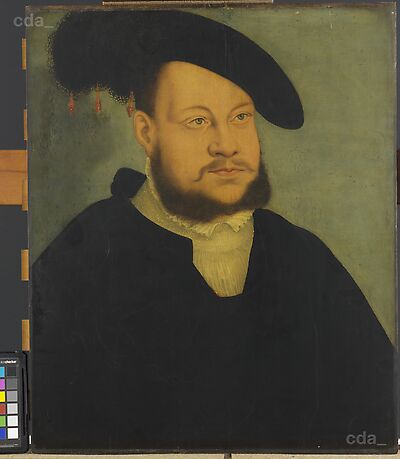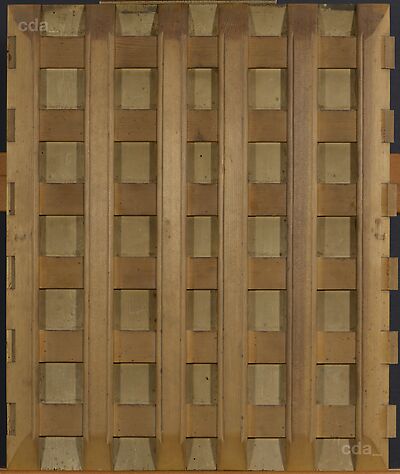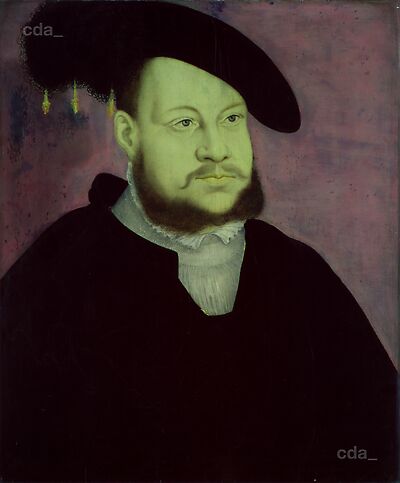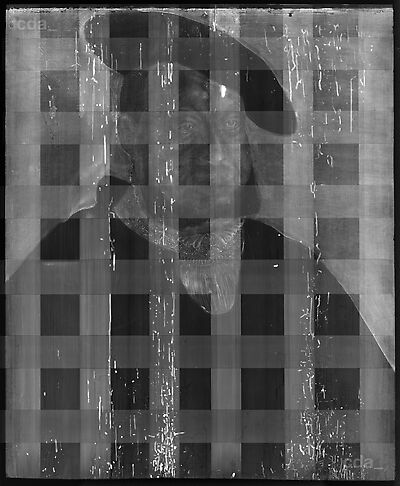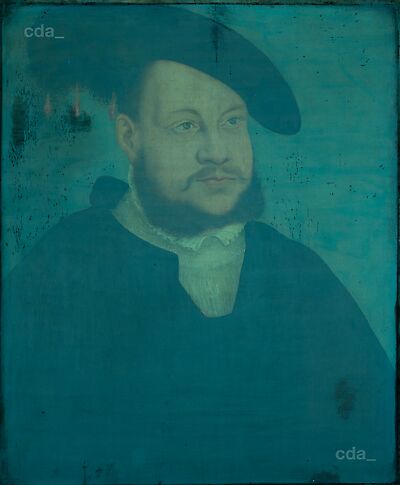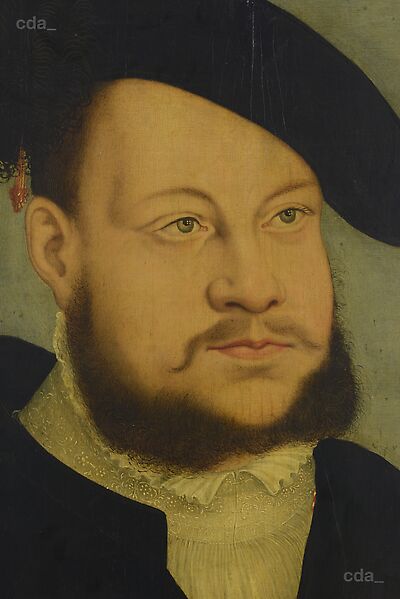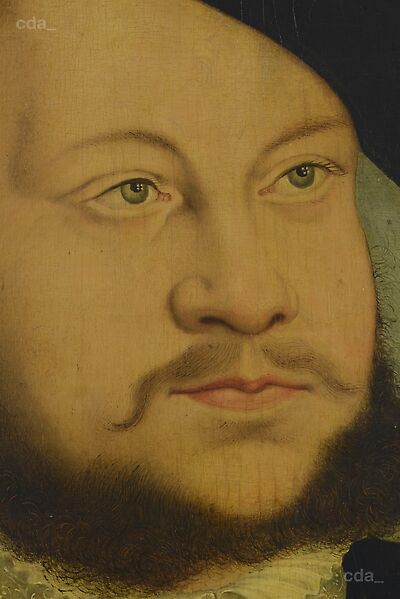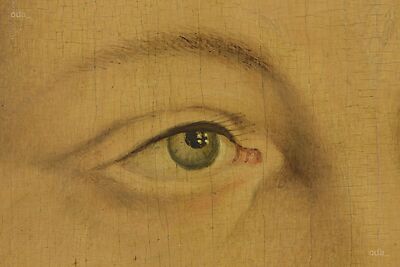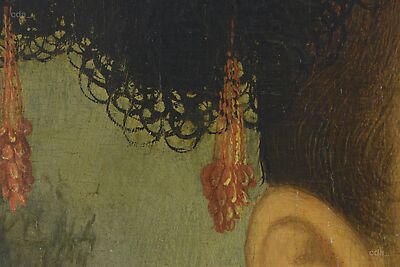Support
The following methods of examination were employed: Stereomicroscopy, XRF analyse (Niton XLt), infrared reflectography (Osiris 900 - 1700nm), UV-light and x-radiography
- the panel consists of two vertically aligned boards (bottom from the left c. 19.2 / 25.5 cm)
- a sample was not taken, but it appears to be a fine pored deciduous wood, possibly limewood
Ground and Imprimatura
- the ground is white; a barbe visible along the top c. 5 mm from the edge of the panel suggests a frame was attached before the ground was applied (the paint and ground are flush with the remaining sides, where the panel has been trimmed slightly)
Underdrawing
An initial design was drawn on the ground using dry blackish-grey drawing material (black chalk?). The contours and essential details are defined with short curved lines. Occasional short parallel hatching-strokes indicate volume and shadow, for example in the right eye. No significant changes were made to the composition during the painting process.
Paint Layers and Gilding
Using XRF analysis the following pigments were identified by comparing their optical characteristics with the detected elements:
White: Pb, Ca, Fe, Hg
Pb: lead white; Ca: chalk / gypsum (?); Fe: ironoxide / ochre (?); Hg: vermilion
Red: Pb, Ca, Hg, Fe
Pb: lead white; Ca: chalk / gypsum (?); Fe: ironoxide / ochre (?); Hg: vermilion
Blue/ black: Pb, Ca, Hg, Fe
Pb: lead white; Ca: chalk / gypsum (?); Fe: ironoxide / ochre (?); Hg: vermilion ?
Yellow / red: Pb, Hg, Fe, Ca, Co, Sn, Mn (Cu)
Pb: lead white; Hg: vermilion, Pb/ Sn: lead-tin yellow; Ca: chalk / gypsum (?); Fe/ Mn: ironoxide / ochre (?); Co: blue containing cobalt / smalt
Blue background: Pb, Co, Fe, Ca (As?)
Pb: lead white; Co: blue containing cobalt / smalt; Ca: chalk / gypsum (?); Fe: ironoxide / ochre / Prussian blue retouching(?)
The following pigments were identified in the paint layers: lead white, lead tin yellow, vermilion, smalt and ironoxide/ ochre. At some stage the background was extensively overpainted, probably with Prussian blue.
The paint was applied in numerous layers with different brushes. Long broad brushstrokes visible in the x-radiograph, particularly in the robe, can probably be associated with an imprimatura containing lead white.
The flesh paint was laid in using a pale admixture of lead white and vermilion, as well as a brownish grey tone for areas of shadow. The depth of the shadow was then enhanced using a combination of glazed and stippled semi-transparent brown paint. Highlights were applied with paler or pinker flesh paint, and are more evident in the x-radiograph than to the naked eye. The contours of the eyes were described with dark brown paint, and there are four white highlights in each pupil. The hair was executed with a fine tipped brush over a flat application of brown underpaint.
The patterns and feathers on the black robe and the hat were modulated in grey over a black underpaint. In the x-radiograph there is no indication that significant changes occurred during the painting proccess. There is no signature.
[Heydenreich, unpublished examination report, 16.10.2022]
